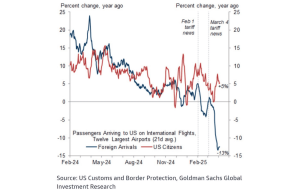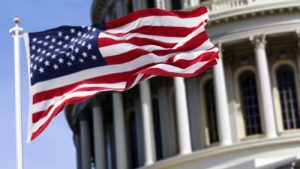The U.S. is on track to grow faster this year than the Federal Reserve previously forecast and maintain a low unemployment rate, leaving inflation disappointingly high and likely leading to more interest-rate increases this year.
That’s the message delivered by the Fed in its latest quarterly forecast for the economy. The central bank rejiggered its outlook after a pivotal meeting at which senior officials voted to leave a key U.S. interest rate unchanged for now.
Yet the Fed also signaled the possibility of two more hikes this year that would push a key U.S. interest rate to as high as 5.75%.
The central bank’s hawkish tone at its June meeting reflected worries that inflation might not slow as quickly as the Fed had hoped given the surprising resilience of the economy.
The U.S. economy is expected to grow at a 1% annual pace in 2023, up sharply from the Fed’s prior 0.4% forecast.
The unemployment rate is seen rising to just 4.1% by year-end instead of 4.6% as previously predicted. The official jobless rate stood at 3.7% in May.
Senior officials believe it’s critical for the labor market cool off to limit the increase in wages and remove a key source of future inflation. Higher labor costs could make it harder to get inflation under control.
The rate of inflation, measured by the Fed’s preferred PCE price index, is expected to slow a touch faster to 3.2% by year-end from a prior 3.3% estimate.
By contrast, PCE inflation stood at 4.4% in the 12 months ending in April.
More worrisome to the Fed is relatively slower progress in reducing core inflation. The core rate excludes volatile food and energy prices and is seen as a better predictor of future inflation.
The Fed raised its year-end estimate of core inflation to 3.9% from its 3.6% forecast in March. That was a bigger increase than Wall Street expected.
PCE inflation stood at 4.7% in the 12 months ended in April.
Fed officials made it clear on Wednesday that they are prepared to raise interest rates again if inflation doesn’t keep slowing toward their 2% goal. They don’t expect to meet their target until after 2025.
The central bank raised its estimate for the fed funds rate to a median 5.6% by year’s end, from 5.1%.
Most economists had predicted the Fed would either leave its forecast unchanged or raise it slightly to just 5.3%.
The Fed updates its forecasts four times a year.
This post was originally published on Market Watch






